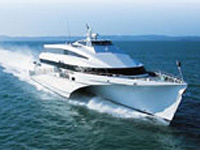Naval Architecture
Description
|
Naval Architecture is concerned with the design, building and utilisation of all types of ships and marine vehicles.
Ships and marine vehicles can be classified as trading vessels which include cargo vessels and container ships, non-trading vessels which include fishing boats, tugs, dredges, pilot boats, lighthouse supply craft, servicing vessels for oil rigs, passenger and vehicle ferries, floating cranes and other specialised ships and military vessels which include frigates, destroyers, aircraft carriers, mine hunters and submarines. These three categories of marine vehicles can be in the form of a monohull (the usual single-hull boat), a catamaran (a twin-hull vessel), a hovercraft (an air-cushion vehicle) or a hydrofoil (a vessel that is lifted out of the water by submerged wings). Naval architecture firms and consultants are significant employers of naval architects. Their work in the field of high speed ferries has been particularly successful and Australia holds the leading position in the research and development of passenger and cargo catamarans. Designs and completed craft are sold globally. Government departments, both state and federal, employ naval architects as do ship classification societies such as Lloyd’s Register of Shipping. Ship owners and repairers also employ naval architects. Studying Naval Architecture at UNSW The study of Naval Architecture is primarily though the School of Mechanical and Manufacturing Engineering. At the undergraduate level, Naval Architecture is available within the Bachelor of Engineering (Honours) program (3707) and relevant dual degree programs. Postgraduate research programs are also offered by the School.
Naval Architecture can be studied as
|
|||||||||||











